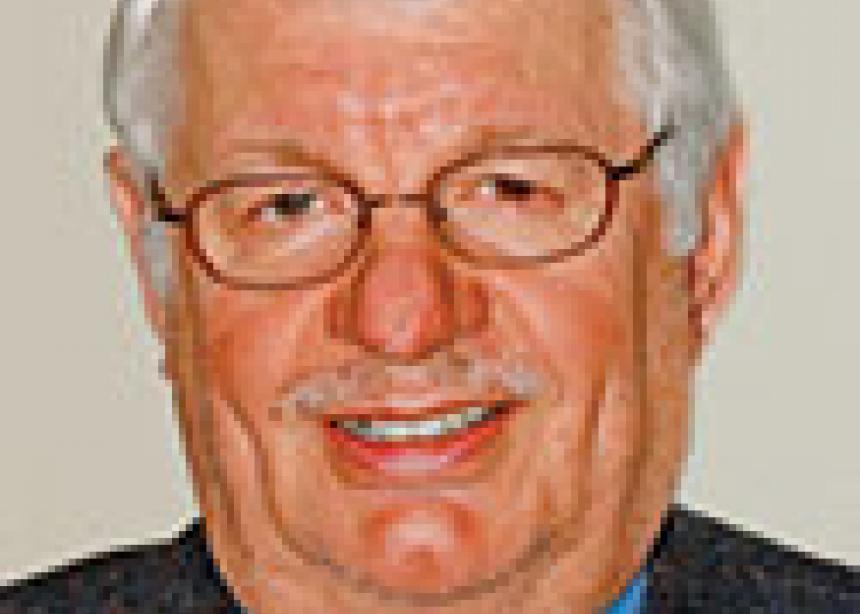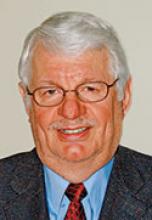“We would benefit more if our leaders were leading more and following less,” lamented one reader in reflecting on the Being a Faithful Church (BFC) discussions at Assembly 2014 this past July. “It is very difficult to guide a scattering herd of sheep from the rear.”
Well, maybe. That sentiment reflects a style of leadership that might have been effective in the past, but is becoming more and more dated. It is apparently calling for more decisive action from the top, crafting statements that are black and white while leaving little room for nuance or grey areas.
If that style of leadership were so effective, why have Mennonites divided and splintered time and again over the more cultural issues of the time (often camouflaged and defended as deeply “spiritual” issues”), so that we in North America represent 18 different major groups?
Many of these splinters occurred precisely because strong, egotistical leaders insisted on certain practices and made declarative statements that, in retrospect, seem archaic, narrow in scope and legalistic—issues of dress code conformity, the evils of Sunday school, young people’s meetings and higher education, and, more recently, divorce, women in leadership and sexual orientation.
Perhaps even more troubling is the metaphor of followers being “sheep.” Sheep are known to be passive and dumb, relying entirely on a shepherd (leader) for their safety, protection, health and overall well-being—hardly descriptive of members of Mennonite Church Canada taking seriously the claims and directives of Jesus in the context of an Anabaptist/Reformation-inspired “priesthood of all believers.” The operational word for today is “discernment,” despite its mocking in good humour by a new Canadian keynote speaker at July’s assembly.
The task force for the BFC process over a five-year period is to be commended for a measured, biblically based approach to the present-day issues of human sexuality, taking a broad look at the subject and not one narrowly focussed on homosexuality or same-sex marriage, but also raising the issue of commitment and fidelity in heterosexual marriage, and the importance of faithfulness in all relationships. It is an approach that wisely avoids, not triggers, narrow-minded, divisive responses that lead to division within the body, rather than unity.
And unlike leading us like sheep, it assumes that we, as faithful members of a local congregation, are serious students of the Bible, are on a constant spiritually formative journey as Christians, and are studying and deliberating as one body, disagreeing and agreeing in love, and assuming openness and growth as normal dynamics in our worship and life as a congregation. The BFC-5 document puts it this way: “Discerning faithfulness is a normal and ongoing vocation of being the church in the world.”
Yes, good leadership of this culturally charged issue is very important. Congregational autonomy is recognized and respected. “Priesthood” is encouraged, meaning we congregants are encouraged to study and learn all aspects of the subject, taking into account scientific findings and sociological studies in the field of sexuality. Experts within congregations should be asked to provide new data objectively and without prejudice.
These, then, should be shared with the MC Canada body as a whole, to which we at Canadian Mennonite are committed. We need to share our stories, experiences and insights with others across the country.
This is the new paradigm of leadership. Even secular society and the corpo-
rate world are engaging in new styles of leadership. The new dynamic for the corporate executive officer is not one of producing the super, work-driven employee, but encouraging the skills of creativity, collaboration and working in groups, rather than emphasizing competitiveness and individual development. The leader is more of a coach than a “boss.”
Forming partnerships in your field is also part of the new paradigm, rather than working so hard at “beating the competition.” Development of new products and services is getting so complex and beyond the reach of any single organization that doing things together gets us all farther along.
In our own religious setting, this is tantamount to discernment—the process of consultation between denominational leadership and local congregations, the recognition anew that we are all “priests” wanting the spiritual best for ourselves and our faith community. That’s the new leadership model.
And it is not necessarily the shepherd leading the passive sheep. Far from it.
--Posted August 27, 2014




Comments
On the issue of sexuality, the Bible provides us everything we need to know about what is right in the eyes of God.
Mr. Benner, are you suggesting that what the "experts" bring into the church from scientific findings, sociological studies, and new data on sexuality will help the church to define what is right and moral before God? Is this new model of leadership that you are proposing supported in scripture? I don't find it in God's Word.
Add new comment
Canadian Mennonite invites comments and encourages constructive discussion about our content. Actual full names (first and last) are required. Comments are moderated and may be edited. They will not appear online until approved and will be posted during business hours. Some comments may be reproduced in print.